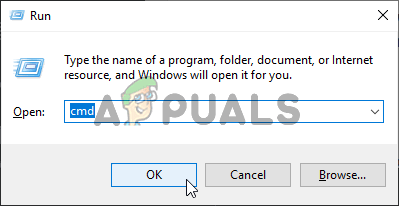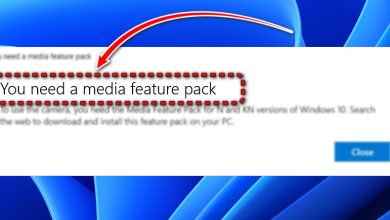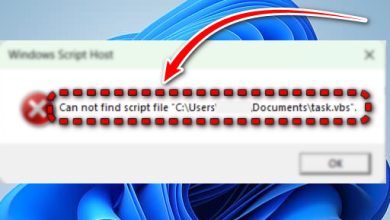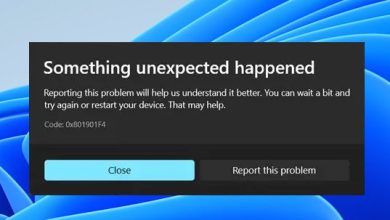How to Resolve CMD Error ‘DNS Server Not Authoritative for Zone’
The ‘DNS server not authoritative for zone’ error is typically encountered when Windows users try to use certain CMD or Phyton commands via the terminal. Typically, this issue effectively prevents affected users from running any commands that aren’t calling built-in utilities.

What’s causing the ‘DNS Server Not Authoritative for Zone’ Error and How to Fix it?
- System File Corruption – As it turns out, this particular issue can occur due to a corrupt system file or a registry inconsistency. If this scenario is applicable, you can fix the issue by using a couple of built-in utilities that are capable of resolving system file corruption (SFC and DISM). In more serious circumstances, you might need to refresh every OS component with a repair install or a clean install procedure.
- Disk drive error – A disk error can also be responsible for this particular error message. If this scenario is applicable, you most likely fix the issue by running a CHKDSK scan in order to scan the integrity of the system metadata and replace bad sectors with healthy equivalents.
1. Running SFC and DISM scans
As it turns out, most instances of the ‘DNS Server Not Authoritative for Zone’ error are actually being caused by a corrupt system file or a registry inconsistency.
A lot of affected users that were encountering this problem have reported that the issue was fixed entirely after they used a couple of built-in utilities that are capable of resolving system file corruption – SFC (System File Checker) and DISM (Deployment Image Servicing and Management).
Keep in mind that SFC and DISM have different approaches when it comes to fixing system file corruption. That’s why it’s ideal to use the two together.
SFC is better at fixing logical errors and it relies on a locally stored cache to replace corrupted files with healthy ones. DISM relies on the WU (Windows Update) component to replace corrupted files by downloading them over the Internet.
To make sure you maximize your chances of success, we encourage to run both in quick succession. Here’s how:
- Press Windows key + R to open up a Run dialog box. Next, type ‘cmd’ inside the text box and press Ctrl + Shift + Enter to open up an elevated CMD prompt. When you’re prompted by the UAC (User Account Control), click Yes to grant administrative privileges.

Running the Command Prompt - Once you’re inside the elevated Command prompt, type the following command and press Enter to open up an SFC scan:
sfc /scannow
Note: Before starting this process, ensure that you have enough time to complete the process. Keep in mind that interrupting the SFC scan before the process is finished might end up producing additional logical errors. And even if the final report doesn’t state anything that was fixed, don’t worry. SFC is notoriously known for failing to report data that was displaced.
- Once the first scan is finished, restart your computer and see if the issue is resolved at the next system startup. After the next booting sequence, follow step 1 again to open up another elevated Command Prompt.
- After you return to the same CMD prompt, type the following command again and press Enter to initiate a DISM scan:
DISM /Online /Cleanup-Image /RestoreHealth
Note: DISM is heavily reliant on Windows Update when it comes to identifying and replacing bad data. Because of this, you’ll need to ensure that your Internet connection is stable before initiating this type of scan.
- Once the operation is complete, restart your computer and see if the problem is resolved at the next system startup by trying to replicate the problem.
In case the same ‘DNS Server Not Authoritative for Zone’ error is still occurring, move down to the next potential fix below.
2. Running CHKDSK scan
Another potential cause that might end up causing this issue is a disk error that might end up affecting your OS ability to use certain terminal functions. If this scenario is applicable, you can fix the issue by running a CHKDSK scan.
This procedure will scan the integrity of the file system and the system metadata looking for any kind of logical file system errors that might trigger this issue. In the event that it finds, them the CHKDSK utility will use healthy sectors to replace bad ones.
A corrupted volume’s master file table, bad security descriptors or a misaligned time stamp can all contribute to the apparition of the ‘DNS Server Not Authoritative for Zone’ error.
Here’s a quick guide on running the CHKDSK scan on the affected computer in order to fix the issue:
- Press Windows key + R to open up a Run dialog box. Next, type ‘cmd’ inside the text box, then press Ctrl + Shift + Enter to open up an Elevated Command Prompt. When you’re prompted by the UAC (User Account Control), click Yes to grant administrative privileges.

Running the Command Prompt - Once you’re inside the CMD terminal, type the following command and press Enter to initiate a CHKDSK scan:
chkdsk /f
- Wait until the operation is complete, then restart your computer and see if the issue is resolved at the next startup sequence.
- At the next startup, repeat the action triggering the ‘DNS Server Not Authoritative for Zone’ error and see if the issue is resolved.
In case you’re still encountering the same error message, move down to the next potential fix below.
3. Performing a repair install / clean install
If none of the methods above have allowed you to fix the issue, chances are you’re dealing with some time of system corruption that cannot be fixed conventionally. In this case, your only hope of fixing the issue is to reset every Windows component.
This can be achieved with a couple of different approaches:
- Clean install – This is an easier procedure since you can initiate it directly from the Windows menus without an installation media. But the major downside is that unless you backup your data in advance, you will lose all your data including personal media, documents, applications, and games.
- Repair install (in-place repair) – Going this route is more tedious and you will need to use an installation media. But the major advantage is that you will be able to keep every personal data including games, applications and personal media.
Note: Here’s how to create a USB installation media for your Windows 10, in case you don’t have one ready.




